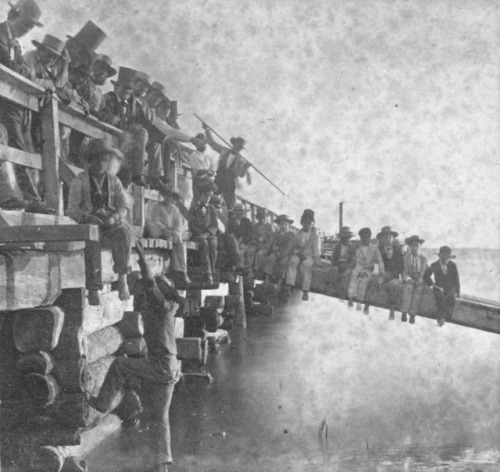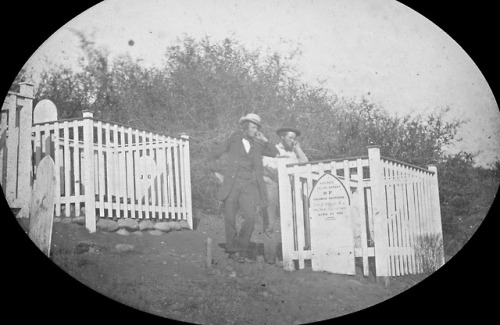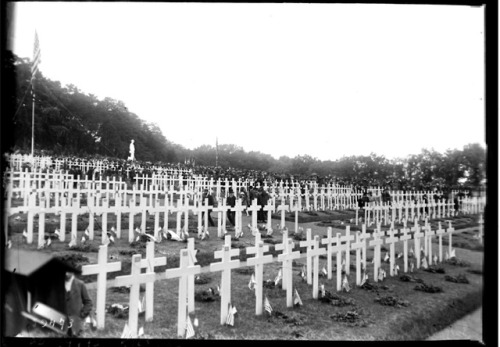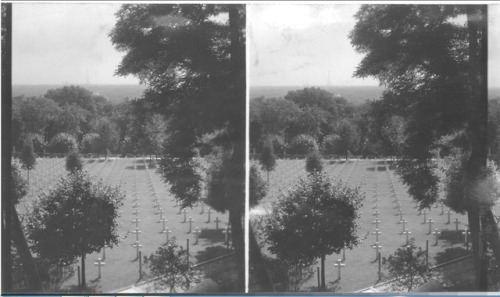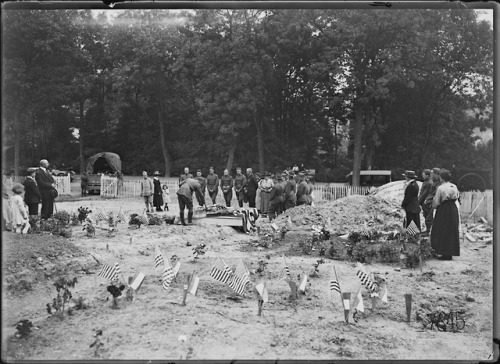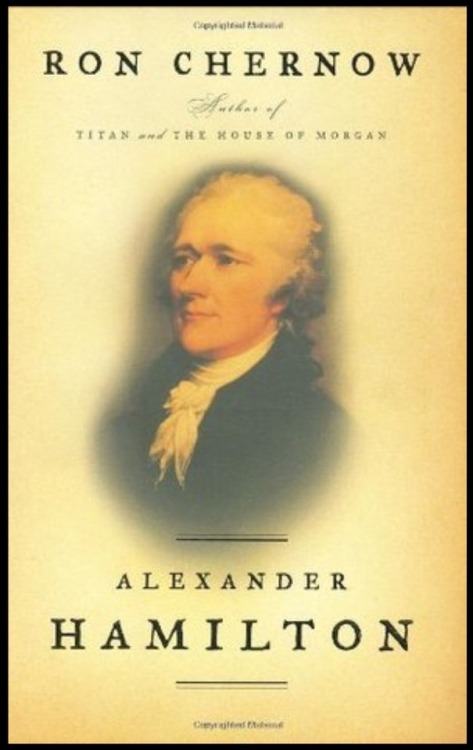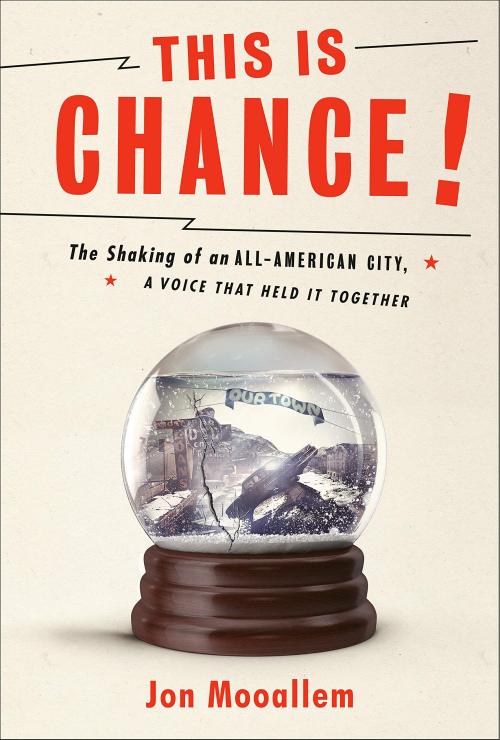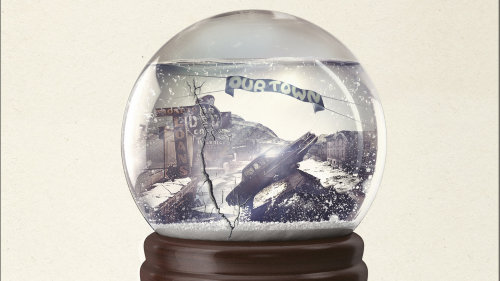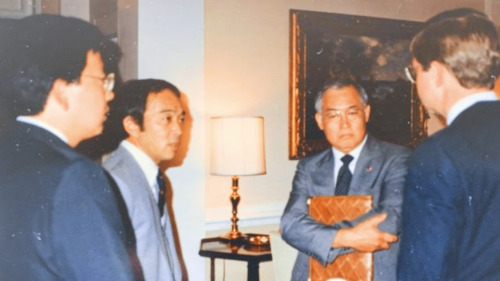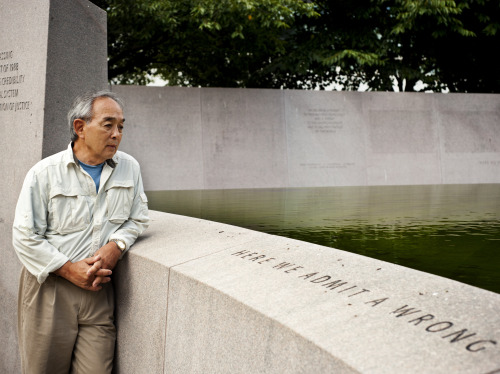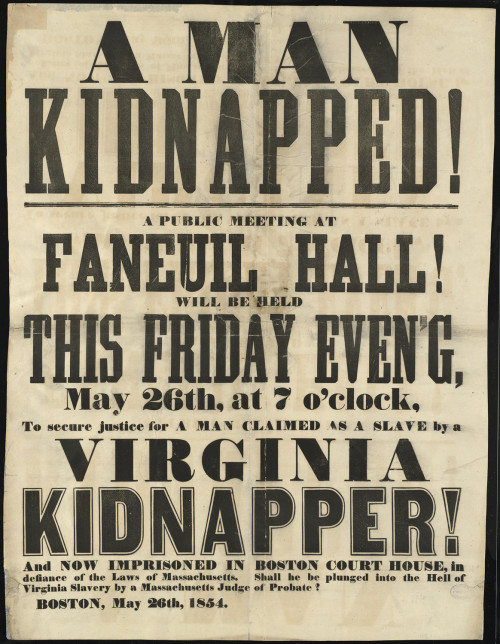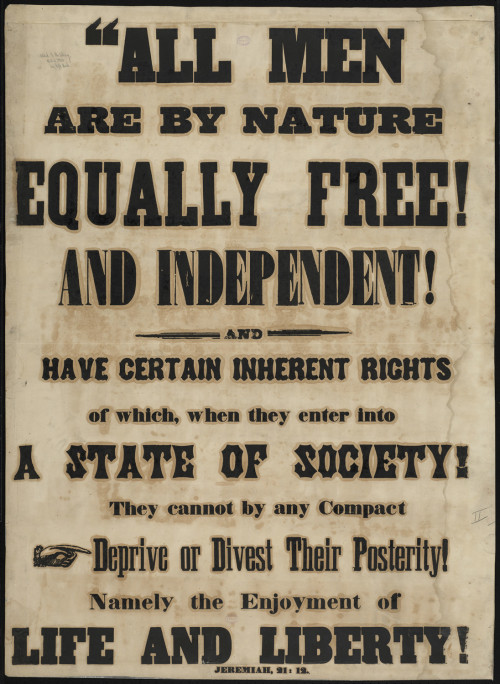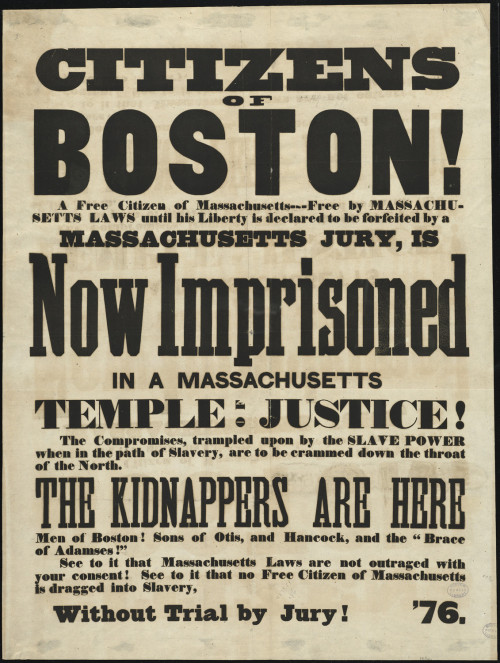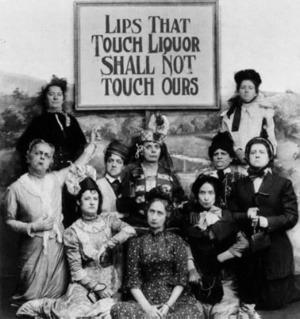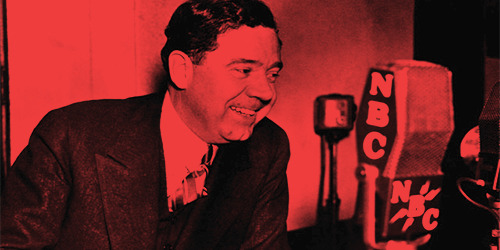#american history
Stereoview portrait of a group posing on a bridge or pier in Mount Pleasant, South Carolina, 1860. By photography firm Osborn and Durbec.
Source: Library of Congress.
Post link
Daguerreotype portrait of two men posing with the grave of Solomon Harthorn somewhere in California, c. 1853.
Source: Sotheby’s.
Post link
“They did not cheer at the sight of their native shores”
“The return voyage was lacking the excitement and adventure of the trip to France, more than two years before. Those veterans who were fortunate enough to come back had developed character and seriousness: to them, life could never again be the same. In the lines of their faces was written the inflexible resolution that had swept them over the enemy’s strongest resistance, and in their steady eyes was the look that had calmly faced death in every form. Their early excitement had given place to sober contemplation, and they did not cheer at the sight of their native shores.”
“September 5 1919, part of the famous 1st Division arrives home, in Hoboken, New Jersey, see photo –History of the First Division During the World War, 1917-1919 –Photos:September 1919, “1st Division at Sea”. The close-ups show these soldiers’ stern and weary faces – National Archives
Note: The First Infantry Division also known as the “Fighting First” earned the distinction of being:The First permanent division in the regular Army – The First American division to land in France – The First American division in the trenches – The First American division to fight in WW1 and suffer combat casualties – The First to use modern, combined arms operations – The First to defeat the enemy at the Battle of Cantigny.
Post link
“We are going to do a bit of landscape work in a small way”
‘August 27 1919, Paris – Yesterday morning I received my Honorable Discharge from the U.S. Army after two years and two months of service, long enough for me – Am now a civilian – Today I signed a contract with the American Army to take care of the work at the cemetery at Suresnes, just thirty minutes from Paris. The A.E.F. has a cemetery there with over a thousand graves which has to be in good shape. The work will be done by French labor and does not amount to very much after things are once put in to shape. My salary is 150 dollars a month which will just about let my wife and I live but then it was a case of take that or starve to death while I was awaiting developments…’
Several weeks later, Allen Peck writes about his work for the cemetery:
‘Spent the day in inspecting and obtaining prices on evergreen trees and various species of plants for forming hedges – Walked through miles of nurseries – We are going to do a bit of landscape work in a small way: about forty trees of about six or seven varieties, and a hedge across the back of the grounds to form a sort of back curtain or screen to set off the white crosses and the various shades of evergreens. I don’t know how it will finally look, but I trust, all right.’
American aviator who just married a French lady and decided to settle in France for a while – Allen Peck’s WW1 Letters Home 1917-1919 – Photos: 1918 & 1919, scenes at the American Cemetery of Suresnes – Gallica, Library of Congress, APS Library
Post link
Who’s read this?? I have only begun this book and having finished chapter one, the genealogist in me is loving it! The historian in me loves it. And the reader in me loves it. So what’s my opinion so far..? Loving it!
I have to wait until October to see the show at the Pantages Theatre in Los Angeles, CA, but I’m there in the story now. And it’s just making me more excited to see the show.
So if you have some extra time, I’d suggest checking out this book from your local library or purchase from your local bookstore.
And a little Thank you to Ron Chernow for writing this book.
Post link
A short lesson from @karnythia.
I feel like even if this wasn’t a majority white country, white supremacy would still definitely function in a way that preserves itself.
Post link

07.25.2019
I love learning about history but everytime I start reading my history textbook I start to feel sleepy. The power of textbook, I guess…
New from Random House and journalist and This American Life contributor Jon Mooallem, This Is Chance! The Shaking of an All-American City, A Voice That Held It Together. The thrilling, cinematic story of a community shattered by disaster—and the extraordinary woman who helped pull it back together
“An intimate, moving story about our capacity to care for one another when things fall apart—and, just maybe, on all the ordinary days, too.”—Elizabeth Gilbert
Post link
New from Heyday, Redress: The Inside Story of the Successful Campaign for Japanese American Reparations, by John Tateishi. The book is the story of a community reckoning with what it means to be both culturally Japanese and American citizens; how to restore honor; and what duty it has to protect such harms from happening again. This book has powerful implications as the idea of reparations shapes our national conversation.
Post link

Today jobs in the medical field are among America’s highest paid occupations. Not so in the 19th century. Not only was it a low-paying profession but it often garnered little popular respect (those leeches may have had something to do with it). Things got so desperate for one Victorian doctor that he took to robbing stagecoaches to make ends meet!
Learn more in Marketplace of the Marvelous by Erika Janik.
The Battleaxes of Boardwalk Empire - the ladies of the US Anti-Saloon League c.1910s from @theretronaut
Post link

Franklin Delano Roosevelt, 32nd US President
I’m proud of this one. I sculpted a suited doll to sit in a wheelchair and gave it a tumbler of scotch.
I can only make this once, so order while you can! Available now at my Etsy.

Betsy Ross
A small reminder that we’ve been here and fighting since the beginning of this nation. It’s been a brutal week for many of us, and we are mad as hell. Take your anger and turn it into action.
If you’d like to purchase Betsy Ross, please follow THIS LINK to my Etsy.
While doing some research for a presentation on Blackface Minstrelsy for my “Boundary Crossings” course, I came across this really cool animated map video about the history of the United States’ formation. It shows when and a bit of why the nation grew and took on different states. I found it incredibly entertaining and informational (it’s only ten minutes long!). The photo below is a screen shot from the video.
Click here to watch it yourself!

HUEY “THE KINGFISH” LONG DIED // Sept. 10th, 1935
after being shot two days earlier, Huey Long died in Baton Rogue, Louisiana; a month after he announced his plans to run for the president.
On the day of the shooting, Long was at the State Capitol building, trying to push out Judge Benjamin Henry Pavy with a re-redistricting plan (”House Bill Number One”). It was Long’s top priority sense the passing of the bill would remove Pavy from the bench. The session that would determine whether or not the bill would be passed was going on all day, even until 9 p.m. Throughout the day, Dr. Carl Weiss (Pavy’s son-in-law) was trying to get a moment alone with Long so that they could speak. But Long and his body guards brushed him off each time while passing in the hallway.
At 9:20 p.m., shortly after the house finally passed the bill that Long had wanted so much, Weiss approached the Senator for the final time. The generally accepted version of what happened in the hall of the Old Statue Capitol building is that when Weiss approached Long, he got into four feet from him and then shot him in the abdomen once with a handgun. After the shot was fired, Long’s bodyguards began firing their own guns are Weiss, shooting him a total of 62 times.
Long was rushed to the hospital and died two days later at 4:10 a.m. His last words are reported to be, “God, don’t let me die. I have so much to do.” LSU historian, T. Harry Williams has suggested that Long could have possibly survived with better medical care. but Edgar Hall (who was among those that were called to treat Long’s wound) denies that his death was a result of medical or surgical incompetence.
In a 2014 documentary about the event called 61 Bullets, directed by Louisiana Kreutz and David Modigliani, questions whether or not Dr. Carl Weiss actually murdered Huey Long. While the documentary debates Weiss’ innocence in the case, historians do not accept the theory that Long actually died as a result of accidentally being hit by one of the bullets fired by his own bodyguards. However, a historical plaque adjacent to the Old State Capitol grounds, at the site of Dr. Carl Weiss’ home reads, “alleged assassin.”
Post link
September 9th 1739: Stono Rebellion
On this day in 1739, the Stono slave rebellion - also known as Cato’s conspiracy - occurred in the British colony of South Carolina. The uprising was led by an Angolan slave called Jemmy (or, by some accounts, Cato), who assembled a group of twenty fellow slaves on the banks of the Stono river, just outside Charleston. They stole guns from a local store and marched south towards a promised freedom in Spanish Florida, bearing signs reading “Liberty!”. As they marched, the rebels descended on plantations, killing slaveowners and recruiting more slaves to join their band. The group of slaves, both men and women, ultimately numbered up to one hundred, but their march was halted by a militia of white colonists when they reached the Edisto river. Here, fighting led to the deaths of most of the slaves, with some escaping but eventually being captured and executed, or sent to the West Indies for sale. The Stono rebellion had a significant impact on the system of slavery in colonial South Carolina. While the uprising led to restrictions on slaveowners’ imposition of excessive work and punishments, the murder of over twenty whites during the rebellion prompted a harsh response from the legislature. Oppressive measures were passed to further curtail slave autonomy by banning them from growing their own food, assembling in groups, earning their own money, or learning to read. Of the 250 slave rebellions in American history, the Stono rebellion was the largest before the Revolution, making it an important, if little discussed, instance of enslaved Africans discarding the shackles of bondage and fighting for their freedom.
Post link

